From Sahelanthropus to Homo sapiens: What did our predecessors look like?

Virtual and 3D reconstructions lead you down the branching paths of 7 million years of human evolution. 15 different hominid species illustrate our prolific evolution, and what an evolution! From Toumai the Sahelanthropus tchadensis to our species, Homo sapiens – the only one still around –, via Lucy the Australopithecus afarensis, Homo habilis the first craftsman, Homo erectus the explorer, and the Man of Spy, a Belgian Homo neanderthalensis.
Toumai, the first biped
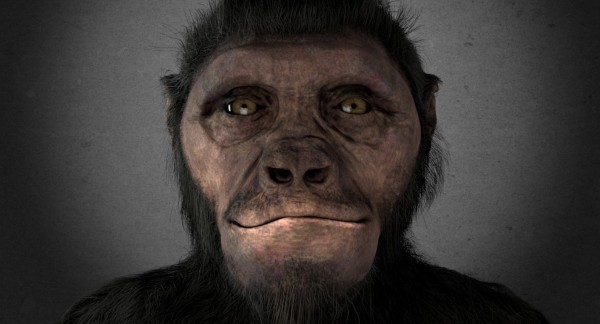
Toumai is a Sahelanthropus tchadensis. Its skull is the oldest skull discovered to date. Additionally scientists found a femur. But who the owner of that femur is, is still uncertain. As a consequence, the rest of his body remains a big mystery! Toumai seems to be very close to our common ancestors, the great apes, and is considered to be the first biped. Just as in human beings, the opening through which the spinal cord runs is located more towards the front. Opponents have their doubts. The skull was completely pulverised. Was it reconstructed correctly? Did Toumai really walk on two feet? This is still under investigation.
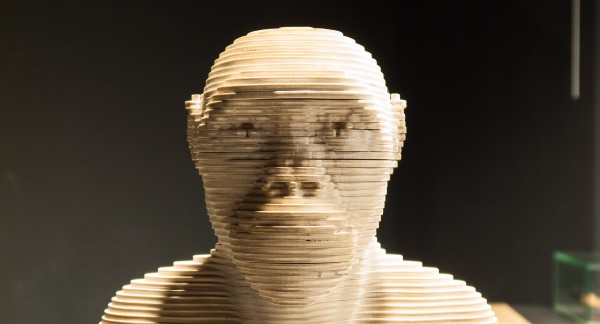
- Scientific name: Sahelanthropus tchadensis
- Gender: Male
- Lived around: 7-6 million years ago
- Height: 113cm
- Weight: Approx. 46kg
- Brain volume: 24% of a modern human
- Habitat: Wooded savannah area with lakes, rivers and woods
- Site: Toros-Menalla, Chad
Ardi, grasping with the foot!
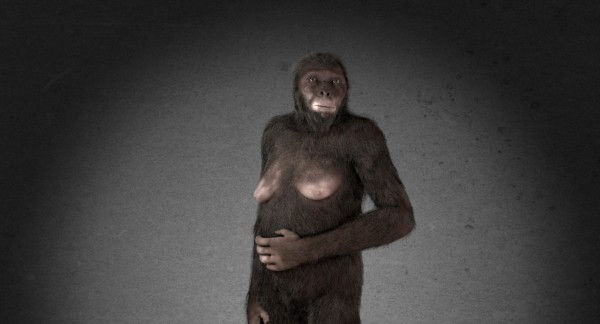
The discovery of the seemingly complete fossil of Ardipithecus ramidus was a revelation for palaeontologists: her teeth and jaws have human characteristics and she was bipedal, but could climb trees too. Most scientists believe that Ardi’s coat looks very much like that of our closest living cousins, the apes.
The body is completely covered in hair. The only exceptions are the face, the hands and the feet.
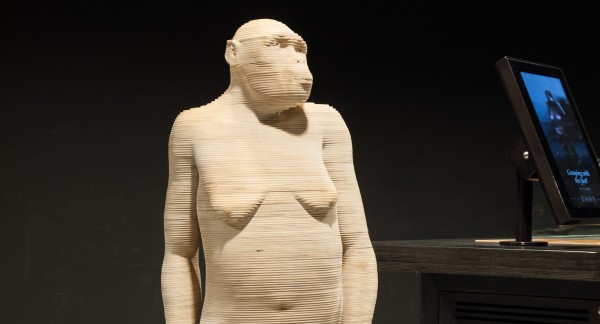
- Scientific name: Ardipithecus ramidus
- Gender: Female
- Lived around: 4.5-4.3 million years ago
- Height: 121cm
- Weight: Approx. 50kg
- Brain volume: 22% of a modern human
- Habitat: Ancient woods
- Site: Middle Awash valley, Ethiopia
Lucy, the first found complete skeleton
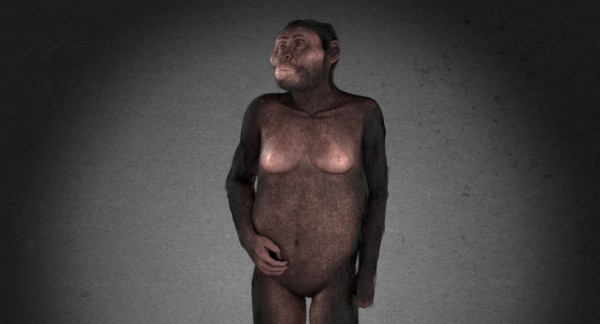
The discovery of Lucy, an Australopithecus afarensis, changed the way scientists perceive our origins; she was a biped with a small brain. This evidence dispelled the notion that an increase in brain size predated bipedalism. Footprints in ash tell us something about the form of Lucy’s feet. Her hair and skin colour remain a mystery. Human’s ancestors lost their hair gradually. Because Lucy is right at the beginning of the family tree she probably had dark fur.
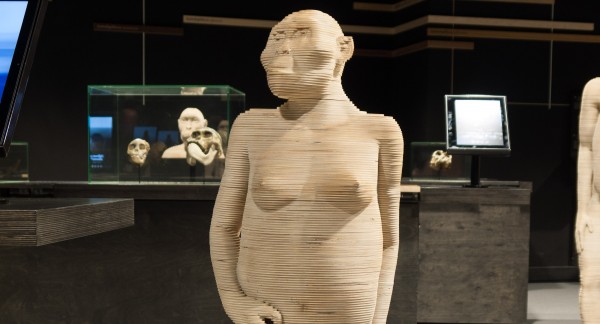
- Scientific name: Australopithecus afarensis
- Gender: Female
- Lived around: 3.9-2.9 million years ago
- Height: 105cm
- Weight: Approx. 29kg
- Brain volume:31% of a modern human
- Habitat: Woods and savannahs
- Site: Hadar, Ethiopia
The human from Kenya, different or distorted
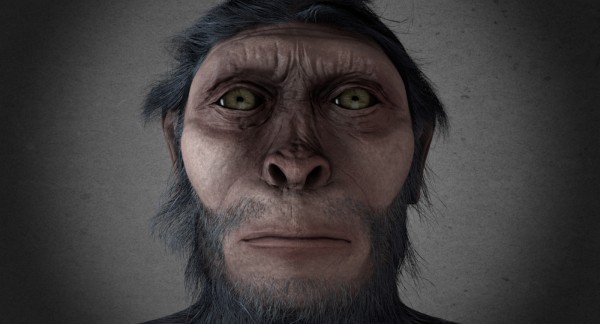
Kenyanthropus platyops, “the human from Kenya”, was a contemporary of Australopithecuse afarensis (Lucy). During this era several species of humans co-existed, some of which were probably not from the lineage that led to modern humans. Kenyanthropus is believed to have had fur. If he did, his colour is a mystery.
With camouflage he would have been barely noticeable, but maybe he had brightly coloured fur to attract attention.
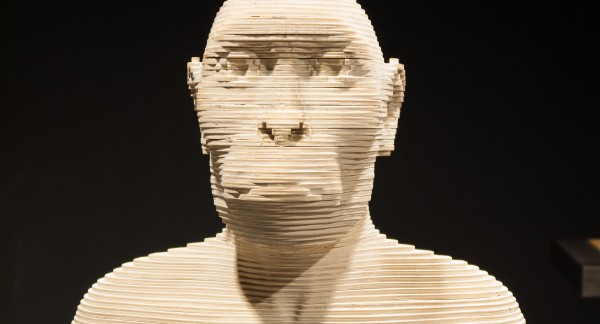
- Scientific name: Kenyanthropus platyops
- Gender: Male
- Lived around: 3.5-3.2 million years ago
- Height: Unknown
- Weight: Approx. Unknown
- Brain volume: Unknown
- Habitat: Grassland and woods
- Site: Lomekwi, Kenya
Ples, the oldest South African fossil
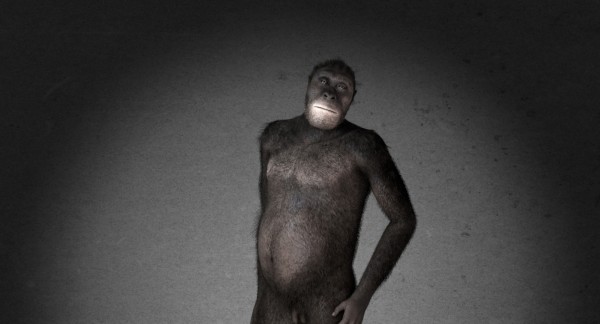
A pre-human, and a human, is an animal and a potential prey for others. Ples, the first Australopithecus africanus to be discovered was a young boy aged three, who was the victim of an eagle; the bite marks from its beak are visible in his eye sockets. Ples is the oldest fossil to have been found in South Africa. He lived 3.3 million years ago.
He probably had a thick coat of fur just like other human predecessors from this period. He had strikingly large teeth.
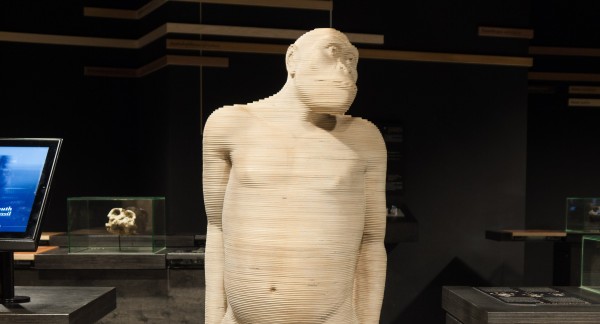
- Scientific name: Australopithecus africanus
- Gender: Male
- Lived around: 3.3-2.3 million years ago
- Height: 135cm
- Weight: Approx. 38kg
- Brain volume: 35% of a modern human
- Habitat: Woods, savannah and grassland
- Site: Sterkfontein, South Africa
Handy man, the first of all Homo species
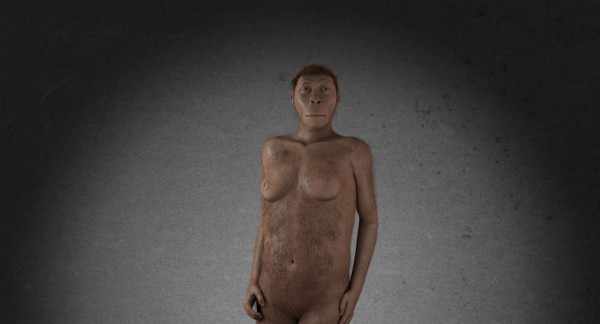
Stone tools and the waste created when they are made were found close to fossils of Homo habilis, “the handy man”‘. Her ability is attributed to the fact that she had a notably bigger brain than other species. Handy man is small, but has comparatively long arms. Her whole body is covered in hair.
Yet her coat was probably a lot thinner than that of older human ancestors. She is a member of the very first Homo species.
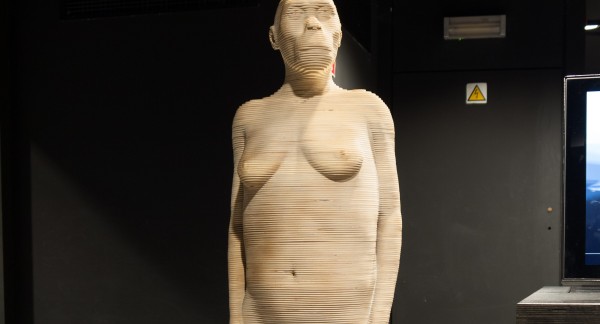
- Scientific name: Homo habilis
- Gender: Female
- Lived around: 2.4-1.7 million years ago
- Height: 131cm
- Weight: Approx. 32kg
- Brain volume: 43% of a modern human
- Habitat: Woods and grassland with lakes and rivers
- Site: Koobi Fora, Kenya
The nutcracker, so different
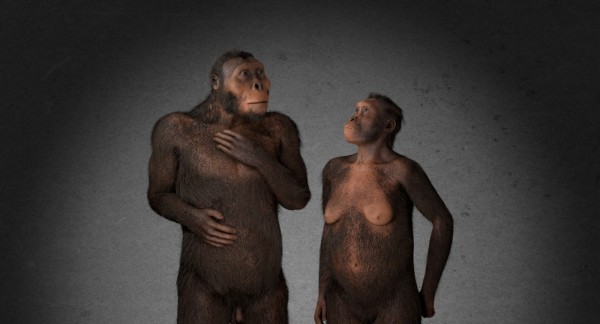
The fossils of Paranthropus boisei, the nutcracker, are separated into two types: large with a thick skull, or small and spindly. They are interpreted as males and females and scientists think they had different behaviour. The sturdy bones tell us that the nutcracker was big and heavy. The skin colour remains a mystery. Variation is possible within a species which explains why the reconstructed man and woman have different skin colours.
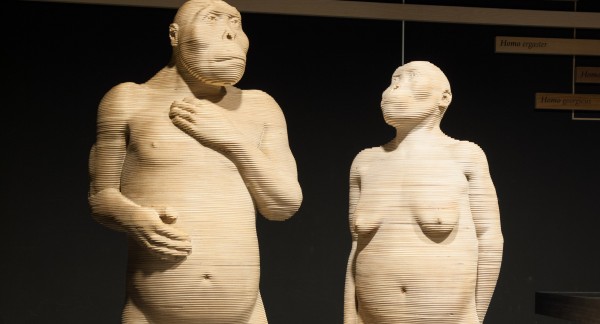
- Scientific name: Paranthropus boisei
- Gender: Male, female
- Lived around: 2.3-1.2 million years ago
- Height: Man 137cm, woman 124cm
- Weight: Approx. 49kg, approx. 34kg
- Brain volume: 34% of a modern human
- Habitat: Grassland and areas abounding in water with rivers and lakes
- Site: Olduvai Gorge, Tanzania - Koobi Fora, Kenya
Australopithecus sediba, the last Australopithecus?
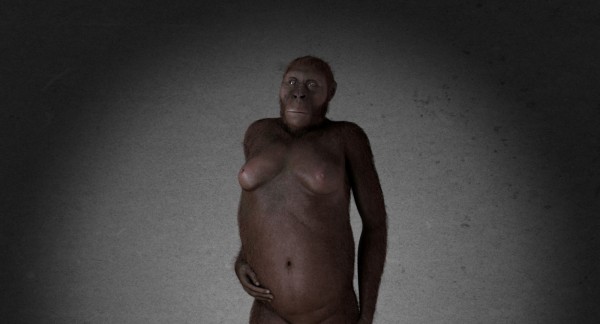
This late australopithecine was around at the same time as early humans (Homo), but as each of the species would have had their own lifestyle and diet, they did not compete with each other for resources. This Australopithecus probably had a thinner coat of hair than that of her predecessors. As a consequence her skin had more contact with the sun. She needed protection against the sun’s harmful UV rays. This is why she was probably dark in colour.
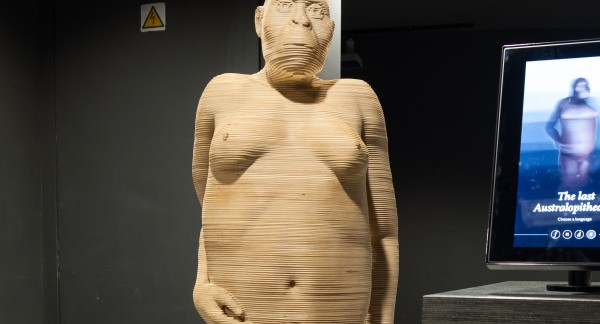
- Scientific name: Australopithecus sediba
- Gender: Female
- Lived around: 2-1.8 million years ago
- Height: 130cm
- Weight: Unknown
- Brain volume: 29% of a modern human
- Habitat: Grassland Savannah and woods
- Site: Close to Johannesburg, South Africa
Turkana boy, increasingly modern
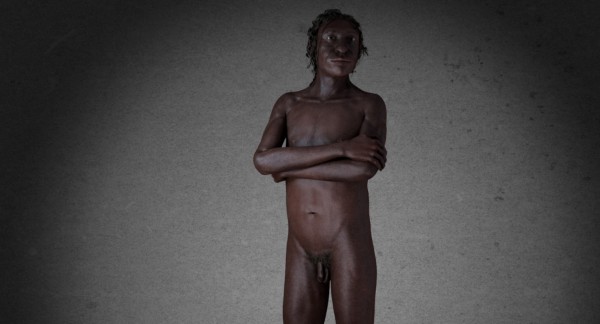
The Turkana boy, an Homo ergaster, had a large brain that controlled a modern body with proportions identical to our own. This made him probably the first human to behave like a hunter. He lived in open savannah. Maybe he didn’t have much hair. It is possible that dark skin protected him from the sun. If he still had a coat of hair then it could be that his skin was light in colour.
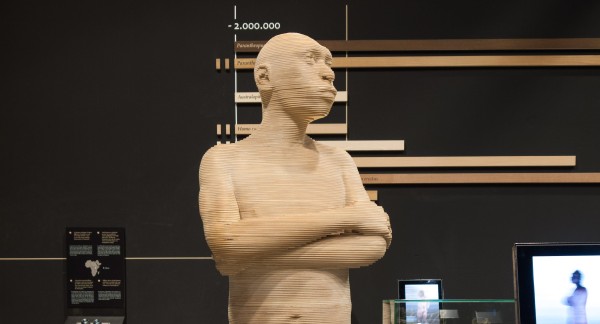
- Scientific name: Homo ergaster
- Gender: Male
- Lived around: 1.9-1.4million years ago
- Height: 160cm
- Weight: Approx. 48kg
- Brain volume: 57% of a modern human
- Habitat: Savannah
- Site: Nariokotome near Turkana Lake, Kenya
The upright human, the longest living?
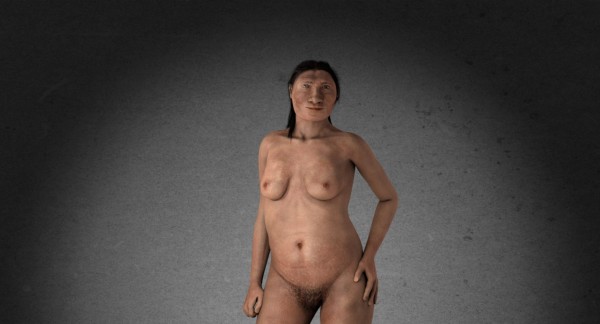
This upright human, Homo erectus, doesn’t have much hair. This meant he didn’t get hot all that quickly and could be active all day long.
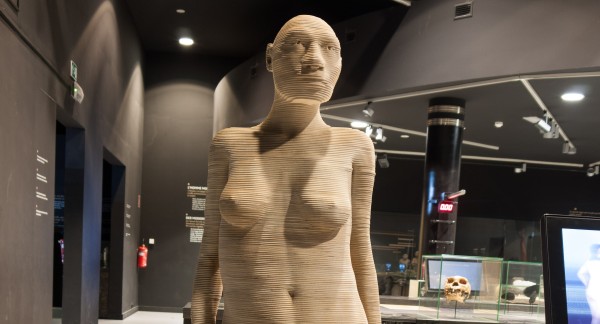
- Scientific name: Homo erectus
- Gender: Female
- Lived around: 1.8 million to 140,000 years ago
- Height: 160cm
- Weight: Approx. 40kg
- Brain volume: 68% of a modern human
- Habitat: Grassland and steppe
- Site: Zhoukoudian, China
The Georgian human, away from Africa
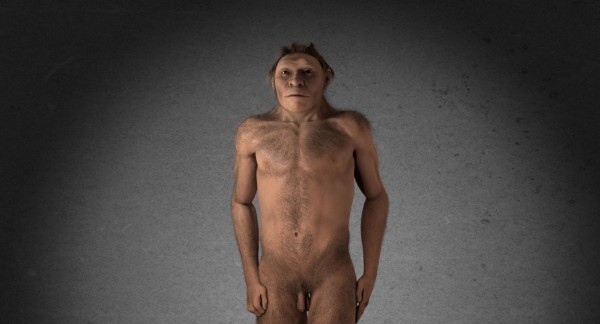
This male fossil discovered at the border of Europe and Asia, the Georgian human, is an enigma: palaeontologists had not expected to find such ancient primitive humans outside of Africa. He soon lost pigment in his skin, because he had less contact with the sun. This means he probably has a lighter skin tone.
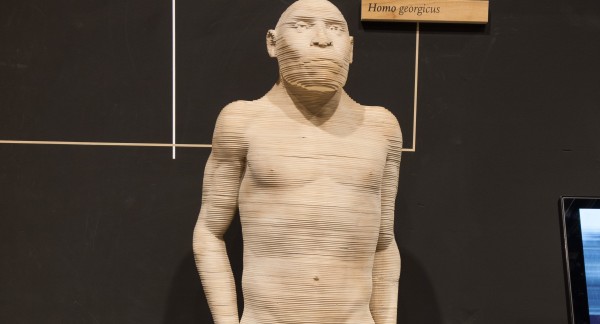
- Scientific name: Homo georgicus
- Gender: Male
- Lived around: 1.8 million years ago
- Height: 146cm
- Weight: Approx. 50kg
- Brain volume: 46% of a modern human
- Habitat: Mix of grassland and woods
- Site: Dmanisi, Georgia
The human from Heidelberg, the first house builder
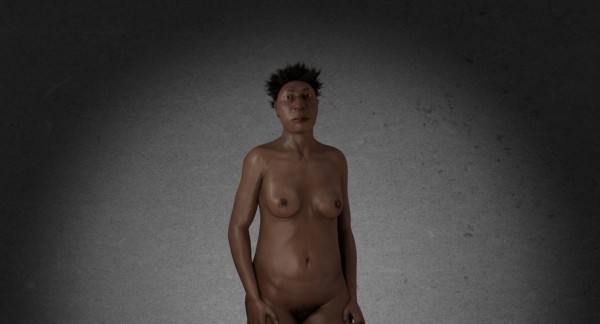
Homo heidelbergensis was always on the move. Some populations migrated to Europe, where they developed into Neanderthals, while others remained in Africa and evolved into modern humans (Homo sapiens). Homo heidelbergensis lived in very different habitats, from hot to very cold regions. Her skin colour was dependent on the environment. In areas with little sun she probably had a lighter skin tone.
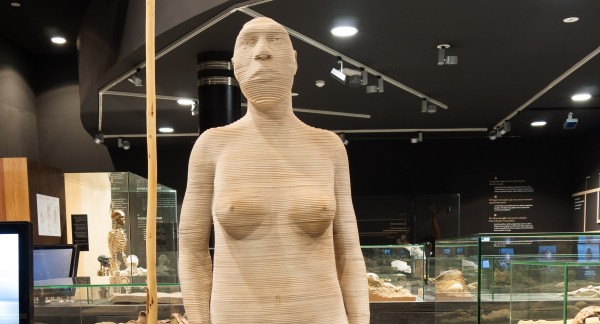
- Scientific name: Homo heidelbergensis
- Gender: Female
- Lived around: 700,000 to 200,000 years ago
- Height: 158cm
- Weight: Approx. 59kg
- Brain volume: 46% of a modern human
- Habitat: From steppe to savannah regions
- Site: Kabwe, Zambia - Mauer, Germany - Atapuerca, Spain
Spyrou, the Spy Man, not a barbarian
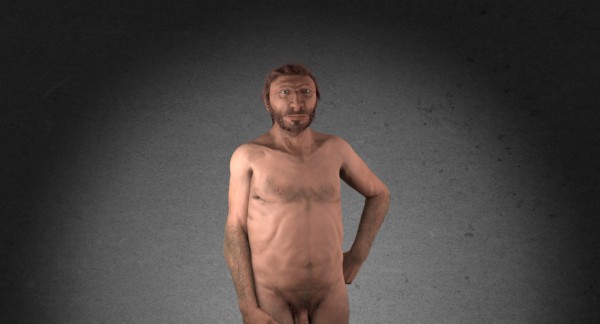
The relationship between Homo sapiens and Homo neanderthalensis – illustrated here by the Spy Man, a Belgian specimen – is the subject of endless debate that highlights both our similarities and our differences. What we do know today is that humans in Eurasia and Oceania have Neanderthal genes. His compact body and large nose meant that Spyrou didn’t get cold easily. From his DNA scientists have discovered that 5% of the species had red hair. The other 95% were not red, but probably not blonde either, because this is a rather more recent physical characteristic.
His skin is probably light in colour.
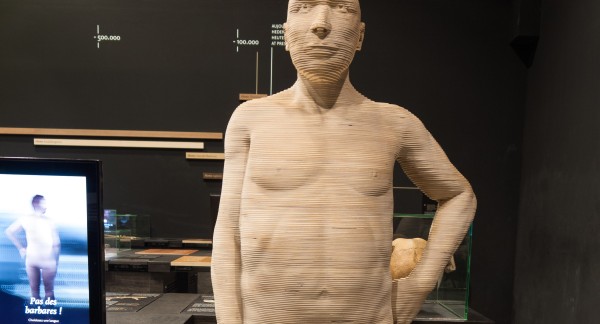
- Scientific name: Homo neanderthalensis
- Gender: Male
- Lived around: 250,000 to 30,000 years ago
- Height: 150cm
- Weight: Approx. 68kg
- Brain volume: 100% of a modern human
- Habitat: Grasslands in glacial periods and woods during hot periods
- Site: Spy, Belgium
Video
The hobbit, the littlest people
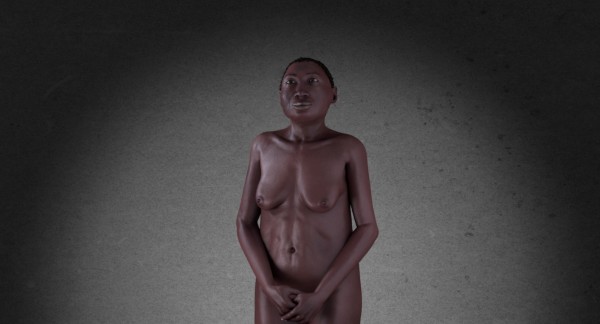
With an unusual appearance, short stature and small legs Homo floresiensis had several ancient characteristics. This species evolved on a small island without predators and without many resources. The small build is a typical sign of adaptation to these conditions. The skeleton of the hobbit is almost complete, but what did she look like?
Was she dark-skinned, or more light-skinned like Homo erectus or hairy like her earlier predecessors? We don’t know who she descends from. That is why we don’t know what she looked like.
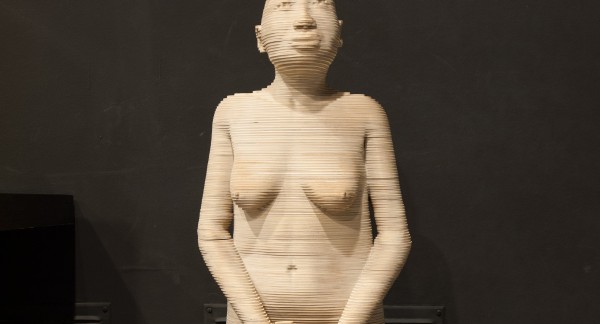
- Scientific name: Homo floresiensis
- Gender: Female
- Lived around: 700,000 to 60,000 years ago
- Height: 110cm
- Weight: Approx. 25kg
- Brain volume: 27% of a modern human
- Habitat: Heavily wooded and mountain peaks over 2000 metres high
- Site: Liang Bua cave, Flores Island
The human, the only survivor
Everyone looks different. So too are our two reconstructions. The first reconstruction has a dark skin like that of people living in southern Egypt, where the fossil evidence was found.
Genetic studies show that South African San people’s coppery skin is the closest in colour to that of the first modern humans. So both skin colours are possible.
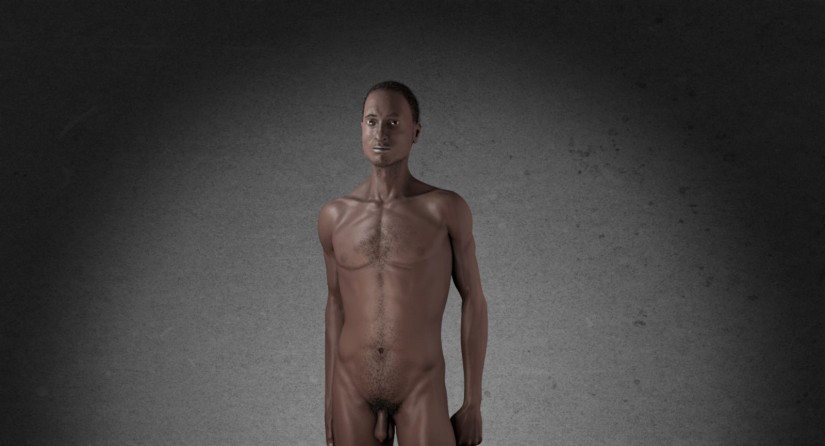
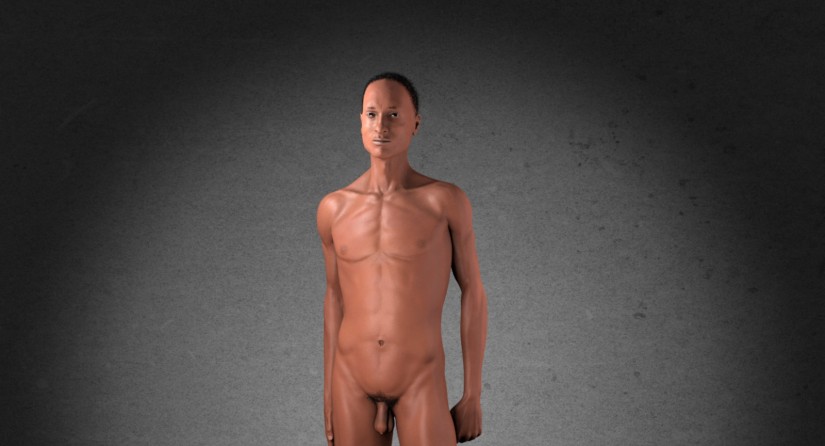
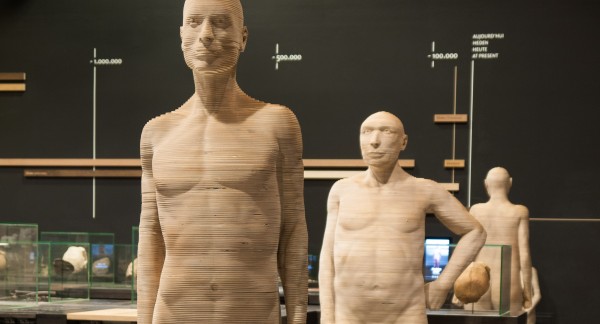
- Scientific name: Homo sapiens
- Gender: Male
- Lived around: 300,000 years ago to date
- Height: 161cm
- Weight: Approx. 70kg
- Brain volume: 100% of a modern human
- Habitat: All continents. From the tropics to the North Pole
- Site: Nazlet Khater, Egypt
Video